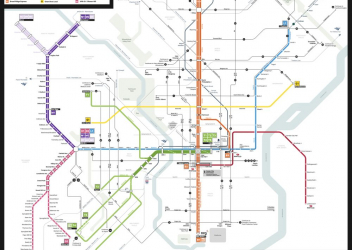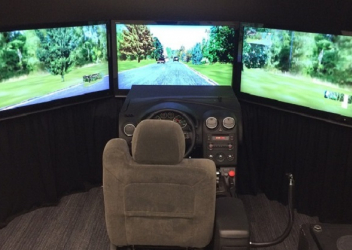Transportation Planning for Safe Mobility
Transportation technology and transportation planning for safe mobility are advancing at a rapid pace. With its mission to prevent and minimize injury among children and youth, CIRP has been building partnerships and expertise to ensure communities and industry consider children, youth, and other vulnerable populations in their transportation technology and transportation planning for safe mobility.
A significant partner in this emerging area of research for CIRP is the University of Pennsylvania’s Mobility21, a U.S. Department of Transportation-funded University Transportation Center (UTC) that addresses safe mobility challenges spanning multiple modes of transportation. With Penn Mobility21, CIRP is exploring:
- smart city technologies
- connected and autonomous vehicles
- improved transportation access to disadvantaged neighborhoods
- multi-modal traveling (including pedestrian and pedalcyclist safety)
- assistive technologies for people with disabilities
- data modeling for monitoring traffic control systems
- regional planning to establish priorities and to aid transportation planning for safe mobility deployment
Research Projects
- Safety Access and Accessiblity
-
Penn Mobility21 examines the role of autonomous technologies to improve accessibility and mobility for specific populations and to ensure that they are safe and reliable. They organize their portfolio of research in a way that is most beneficial to mobility and safety in Philadelphia, in Pennsylvania, and then more broadly. CIRP is particularly interested in conducting research on designing complete, safe, urban and intercity transportation networks. The “first and last mile” connections along these networks -- the small yet critically important trips that connect travelers from their true destinations to the busses, trains, and subways that get them there -- are often poorly planned and difficult to navigate, particular for the disabled and older adults. Because the gap between a traveler’s front door and the closest transit stop may be a barrier to using the transportation system to its full potential, we focus on designing complete safe networks.
- Focus on the Edge Conditions of Transportation Technology
-
CIRP researchers also want to understand edge conditions of autonomous technologies for transportation beyond which a given technology does not perform as intended. Technology designed for adults might not work well for children, for example. We want to help provide the scientific foundation on which they can design technology with children and other vulnerable populations in mind.
Read a blog post about the research.
- Design of Safe, Navigable, Intermodal Terminals: The Wayfinders Project
-
Wayfinders, New York CityIn collaboration with the Port Authority of New York and New Jersey and the New York Metropolitan Transportation Authority (MTA), Penn Mobility21 is leading an analysis of users’ visual experience to understand how AirTrain riders navigate intermodal connections between Penn Station and JFK Airport. The Wayfinders Project addresses the idea that a hard-to-navigate intermodal terminal can discourage people from using transit for their trip. The network is only as complete as its weakest link.
This project aims to produce quantifiable data towards understanding how users of the AirTrain navigate the connection between AirTrain and linking transit services: the Long Island Railroad and the Subway. Eye tracking glasses gather data about users’ eye movement, gaze, and pupil dilation to provide a data-driven analysis of their experiences and interactions with existing design elements in the environment as they follow a route beginning at Penn Station and ending at Jamaica Station before connecting through to access the AirTrain.
Research findings will equip the Port Authority with a series of recommendations and wayfinding practices, particularly geared to vulnerable users, including the disabled and older adults. The researchers also hope that their findings will inform plans for application in current and future AirTrain developments.
Principal Investigator: Megan S. Ryerson, PhD
Funding: Port Authority of New York; Port Authority of New Jersey; New York Metropolitan Transportation Authority










